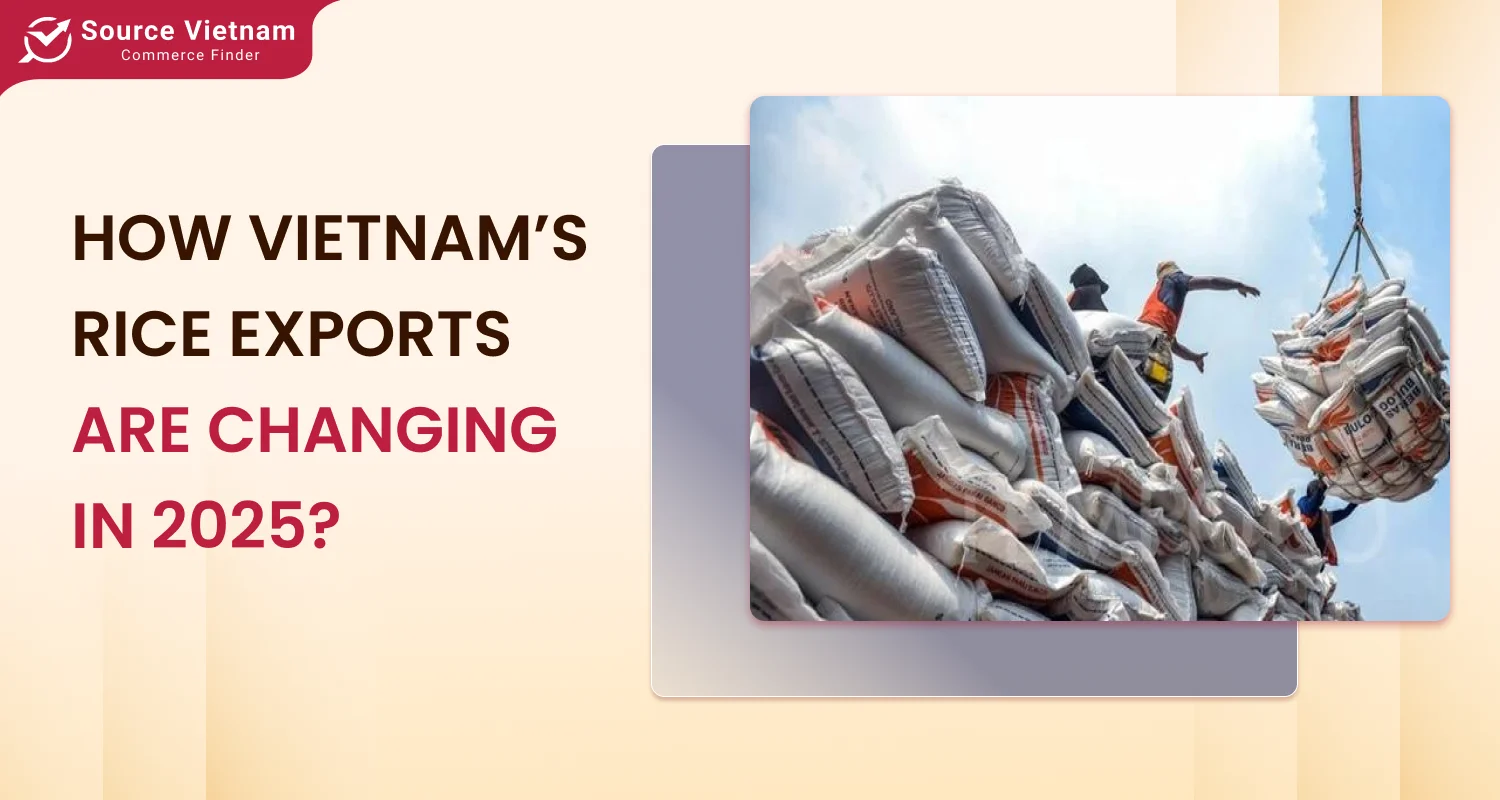Vietnam’s rice exports grew in volume but declined in value in early 2025, facing intense global competition and falling prices. The government is working on market stabilization strategies, financial support for exporters, and a stronger focus on high-quality rice.

Stabilizing the market and boosting rice exports
On March 4, the Ministry of Agriculture and Environment held a meeting to discuss rice production and consumption in the Mekong Delta. Minister Do Duc Duy addressed the challenges facing rice exports and emphasized the need for both short-term and long-term solutions to stabilize the market.
“The market is difficult, and we must act cautiously but swiftly to minimize negative impacts,” Minister Duy said. “The priority is to protect farmers, businesses, and our export partners.”
Following the meeting, the ministry plans to compile information and submit an official directive to the government. This directive will focus on balancing supply and demand in response to global and domestic market trends.
Read more >>> 10 Reliable Rice Supplier in Vietnam for Bulk Orders and Export
Rice exports in early 2025
In February 2025, Vietnam exported an estimated 560,000 tons of rice, generating $288.2 million in revenue. For the first two months of 2025, total rice exports reached 1.1 million tons, valued at $613 million. This represents a 5.9% increase in volume but a 13.6% decline in value compared to the same period in 2024.
The average export price for rice in early 2025 stood at $553.6 per ton, an 18.3% drop from last year. In early March, the export prices were:
- 100% broken rice: $310 per ton
- 5% broken rice: $393 per ton
- 25% broken rice: $367 per ton
Read more >>> How to Import Rice from Vietnam to Philippines: Tips for Success
Key export markets and rice categories
White rice accounted for 71% of Vietnam’s exports, with an average price ranging from $523 to $540 per ton. The top buyers included the Philippines, Indonesia, and African countries. Fragrant rice, such as Jasmine, Dai Thom, ST24, and ST25, made up 19% of exports, fetching $640 to $700 per ton. These premium varieties were mainly shipped to the EU, the U.S., China, and Japan.
Glutinous rice represented 6% of total exports, primarily sent to China, the Philippines, and other Southeast Asian countries. Japonica and specialty rice varieties made up the remaining share.
Supply outlook for 2025
According to Ngo Hong Phong, Director of the Department of Quality, Processing, and Market Development, the total rice planting area in 2025 is expected to reach 7.03 million hectares, down 70,000 hectares from 2024. The reduction is due to land being converted for non-agricultural purposes and higher-value crops.
Despite the decrease in planting area, average yields are forecasted to rise to 61.3 quintals per hectare, bringing total rice production to 43.1 million tons, a 170,000-ton decrease compared to 2024. After processing and accounting for losses, Vietnam will have about 27.4 million tons of rice available, with 6 to 6.5 million tons expected to be exported.
Challenges and competition
The global demand for rice remains high, offering Vietnam opportunities to expand its market share, especially for high-quality rice. However, the country faces strong competition from other major exporters.
India lifted its ban on white rice exports in September 2024, increasing supply and putting downward pressure on prices. Meanwhile, Pakistan and Myanmar continue to dominate price-sensitive markets such as Africa and the Middle East with cheaper rice.
In the premium segment, Thailand maintains its strong position, competing directly with Vietnam’s fragrant rice varieties. Adding to the challenge, rising production costs are squeezing profit margins for Vietnamese rice exporters.
A Year of record exports
Deputy Minister of Industry and Trade Nguyen Sinh Nhat Tan noted that 2024 was a historic year for Vietnam’s rice exports. The country shipped over 9 million tons, the highest ever recorded. Export prices also reached their highest levels.
However, rice prices began declining sharply toward the end of 2024. “We must continue exploring new markets while maintaining our existing ones,” Tan said. “Adjusting the structure of rice exports is crucial, with a stronger focus on high-quality rice.”
Vietnam has made significant progress in linking export activities with processing and production. These efforts, which began in 2024, are expected to bring greater efficiency in 2025.
Financial support for farmers and exporters
Do Ha Nam, Vice Chairman of the Vietnam Food Association (VFA), urged the State Bank of Vietnam to support rice farmers and exporters by improving access to financing.
He proposed increasing credit limits for exporters and suppliers while extending loan repayment periods. This would allow businesses to store rice longer, preventing the need for rushed sales at lower prices. Nam also called for lower interest rates to ease the financial burden on rice exporters.
Moving forward
With rising global demand and strong production capacity, Vietnam remains well-positioned in the international rice market. However, price fluctuations, competition, and high production costs pose ongoing challenges.
Government support, financial relief for exporters, and a shift toward high-value rice could help stabilize the market and sustain Vietnam’s position as a leading rice exporter.